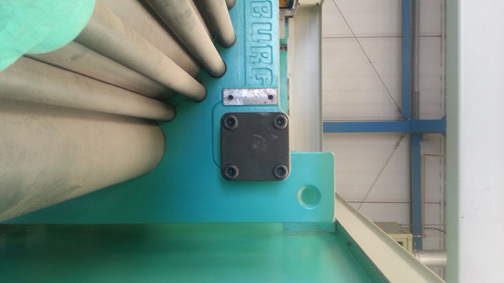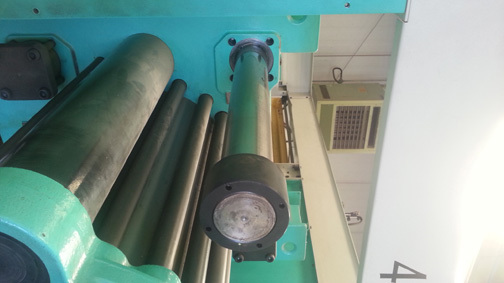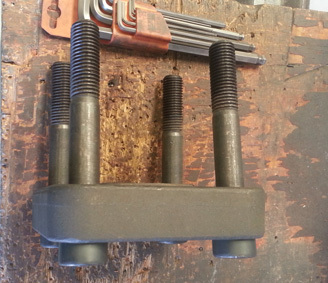Pete_K
Mechanical
- Sep 23, 2015
- 50
A customer of ours asked us to look into something for them. They have a number of large presses. The presses have large bases at either end, tie rods connecting the bases, and a large hydraulic cylinder which creates a rather large separating force.
They infrequently experience failures of the tie rods, where after the failure the tie rod fragment along with the nut shoot away from the base with some decent speed. They welded in restraints meant to stop the fragment/nut, but are now questioning whether these restraints are satisfactory. We had previously offered to help them review the material, threads, and pre-tensioning, but as of right now they're only interested in making sure the guards are OK.
So, my issue is in determining what loading I use to evaluate the guards. The tie rod, when loaded via actuation of the hydraulic cylinder, stores an amount of elastic, or spring, energy. What happens when the break occurs? Does all of that (minus minor losses) become kinetic energy of the fragment/nut? Or is some of that energy shared with the remaining length of tie rod and its nut?
Or rather is the accel of the fragment/nut due to stored elastic energy of the compression of the base and nut?
Is the stored energy of the tie rod equal to the stored energy found in the bases? Looking thru some bolted joint stiffness calcs and finding that energy, I don't believe this to be so, but the more I think about this, the more complex it is seeming to me. And the more complex it seems, the more I think I should just keep it simple and choose a very conservative approach.
I've been looking thru a lot of texts and trying to research this, but just can't find anything that answers my questions, though I have found others who have posted similar questions. I've included a really rough sketch to hopefully convey the basic form of the press.
I appreciate any and all comments, suggestions, etc. that anyone can offer. Thanks.
They infrequently experience failures of the tie rods, where after the failure the tie rod fragment along with the nut shoot away from the base with some decent speed. They welded in restraints meant to stop the fragment/nut, but are now questioning whether these restraints are satisfactory. We had previously offered to help them review the material, threads, and pre-tensioning, but as of right now they're only interested in making sure the guards are OK.
So, my issue is in determining what loading I use to evaluate the guards. The tie rod, when loaded via actuation of the hydraulic cylinder, stores an amount of elastic, or spring, energy. What happens when the break occurs? Does all of that (minus minor losses) become kinetic energy of the fragment/nut? Or is some of that energy shared with the remaining length of tie rod and its nut?
Or rather is the accel of the fragment/nut due to stored elastic energy of the compression of the base and nut?
Is the stored energy of the tie rod equal to the stored energy found in the bases? Looking thru some bolted joint stiffness calcs and finding that energy, I don't believe this to be so, but the more I think about this, the more complex it is seeming to me. And the more complex it seems, the more I think I should just keep it simple and choose a very conservative approach.
I've been looking thru a lot of texts and trying to research this, but just can't find anything that answers my questions, though I have found others who have posted similar questions. I've included a really rough sketch to hopefully convey the basic form of the press.
I appreciate any and all comments, suggestions, etc. that anyone can offer. Thanks.




